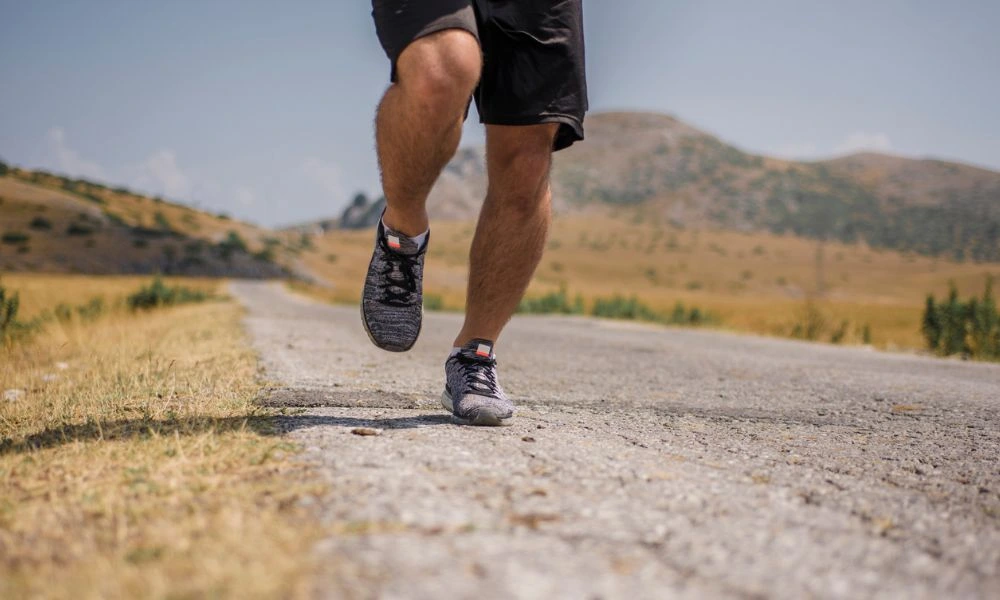Regular running on hills improves your technical skills and gives you a noticeable increase in strength by overcoming the force of gravity. These strength gains are often not possible through conventional training.
Most runners need help understanding how to train for hills. They choose hills that are too long or steep, run too fast, and spend too little time on recovery. The result is poor training impact, injury, and burnout at worst.
Before running to the nearest mountain trail, we must understand how to achieve hill running results.
Why is Hill Running Necessary?

In hills, all three types of muscle fibers are involved: slow twitch (Type I), intermediate fast twitch (Type IIa), and fast twitch (Type IIx).
Slow-twitch fibers produce the least force but work aerobically and take a long time to fatigue, making them ideal for endurance.
Intermediate fibers produce more force than slow-twitch fibers, creating the long, powerful strides associated with middle-distance running.
Fast-twitch fibers produce the most force, but they work anaerobically and are only applicable for short periods.
I personally like to use hill sprints with beginner runners who are too early in their training to handle high-speed track workouts. In my experience, hill reps offer a safe but challenging alternative that improves technique without putting too much stress on the joints.
For more experienced athletes, I’ve used hill circuits as a mental reset mid-training block when motivation dips and workouts start to feel stale.
When Should You Use Hill Running?
There is no wrong time to use hill running:
It can be used early in the training cycle to develop fast-twitch muscle fibers in short and middle-distance runners.
For athletes prone to injury, hill running can serve as a safe and effective introductory speed workout. It’s also a suitable option for beginner athletes looking to enhance their running techniques.
Raises can also be used in the middle of a training cycle. Long climbs are a good alternative for athletes who are mentally tired from constantly running on the track.
You can also mix regular intervals and hills into one workout, creating a workout with hills at the end to work through lactate buildup and build mental toughness when running when you’re tired.
How to Train on Hills?

When we run, muscle fibers turn on one by one. We use slow-twitch fibers first; intermediate fibers are added as strength increases, and fast-twitch fibers are added when the demand is greatest (for example, running up a steep hill).
Therefore, we can design hill training separately for each fiber type to work together more effectively.
1. Long Climb (Aerobic Power + Coordination)
This workout targets your slow-twitch fibers and improves running economy. It’s ideal for long-distance runners.
Benefits:
- Recruits more slow-twitch fibers
- Builds resistance and muscle coordination
- Increases ankle flexibility and stride efficiency
- Engages intermediate fibers for better fiber interaction
How to do it:
- Find a moderately steep hill (~4–6% grade)
- Start with 800–1600m continuous uphill every 2–3 weeks
- Build up to 3–5 km as your form improves
- Stay in an aerobic zone (don’t push the pace)
2. Long Hill Intervals (Full Fiber Activation)
This workout targets all muscle fibers and builds endurance and strength.
Progression:
- Week 1–2: 4–8 × 30 seconds, 2–3 min recovery
- Week 3–4: 4–8 × 60 seconds, 3–4 min recovery
- Week 5+: 4–6 × 90 seconds, 4–5 min recovery
Effort level: Hard but controlled. You should be able to do one or two more reps if needed.
3. Short Hill Sprints (Neuromuscular Power)
This high-intensity workout builds power and improves coordination between opposing muscle groups (e.g., quads and hamstrings).
Benefits:
- Works all muscle fibers at 90–95% max effort
- Reduces neuromuscular inhibition
- Improves stride length and fluidity
How to do it:
- Steep hill (8–12% grade)
- 4–5 × 30–60m sprints (5–10 seconds)
- Build up to 8–12 reps
- Rest 2–3 min between reps (walk or jog back down)
4. Jumping Drills on Hills (Strength + Efficiency)
Jumping builds muscular strength and running efficiency. Do these on a hill with a 6–7% grade.
Types of jumps:
- Vertical jumps: Jump upward while lowering onto the opposite leg
- Horizontal jumps: Focus on forward length (not height)
- Skip jumps: Hop on one foot, short step, then repeat
How to do it:
- 50–70m section, up and down
- 1–2 sets per drill are enough for a solid stimulus
5. Downhill Speed Steps (Eccentric Strength + Resilience)
Downhill running trains the quads through eccentric contractions, which occur when a muscle lengthens while contracting.
Why it matters:
- Builds stronger quads and better knee lift
- Increases resistance to quad fatigue in races
- Enhances stride durability on descents
How to do it:
- Moderate slope (6–7%)
- 4–5 × 60–100m downhill runs at 85% effort
- Increase to 6–8 reps at 90–95% effort
- Recover 2–3 min between reps
- Do this workout on soft surfaces (trail or grass)




